Longing for Longhouses in Borneo

Peregrina's Journey
Peter and Margie Benziger
Tue 7 Aug 2012 06:47
06:53.5N 116:51.5E
Longing For Longhouses By Peter
Peregrina
has spent the past couple of months cruising along the states of Sarawak and Sabah
here in Borneo. The traditional dwelling
of the indigenous tribesmen here is called a longhouse. We went to visit a longhouse
belonging to the Rungas tribe, one of Sabah’s oldest native residents. The Maranjak Longhouse serves as an example of
this traditional style of construction and reflects the lifestyle and culture
of these very traditional people. Several
families live here but it is open to the public and available for homestays. Longhouses such as this one are still found in
the interior of Sabah where the Rungus men continue to work in farming and agriculture
and the women are renowned for their handicrafts, particularly woven fabrics,
beadwork and basketware.
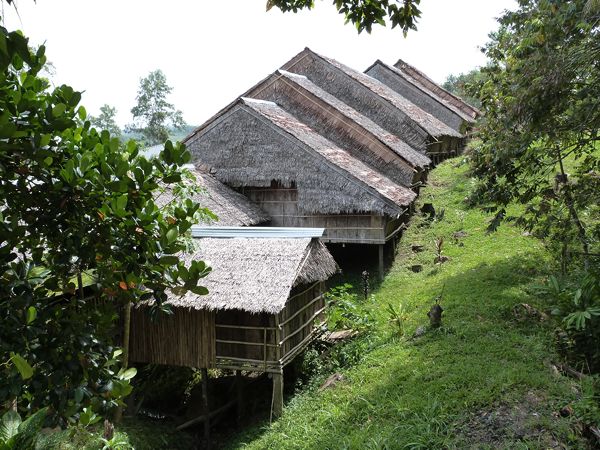
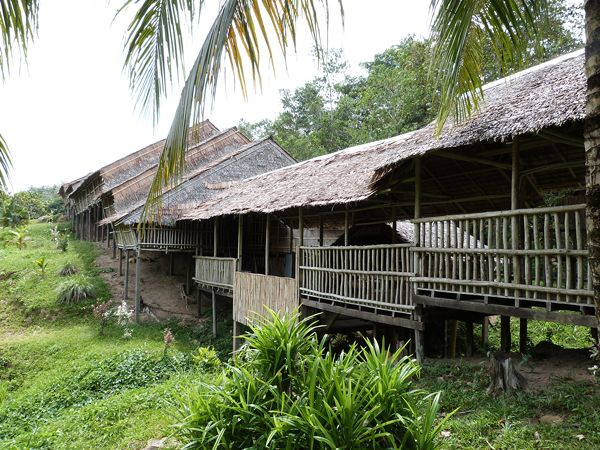
Longhouses were usually built off the
ground and along a terraced river bank. The longhouses were built on stilts for
a number of reasons including:
-To raise the building above the
water should flooding occur
-Allow the animals such as pigs,
chickens and water buffalo to live underneath
-To serve as a refuge or fortress in
case of attack.
-To allow air to circulate throughout
the house
In the picture below, you can see
that the floor is made from split bamboo. When we walked on it the floor was
soft, spongy and we could feel the breeze come up from underneath. In fact, air
circulated freely through the walls, roof and floors. It was cool and a slight breeze could be felt
in all rooms. Who needs air conditioning!
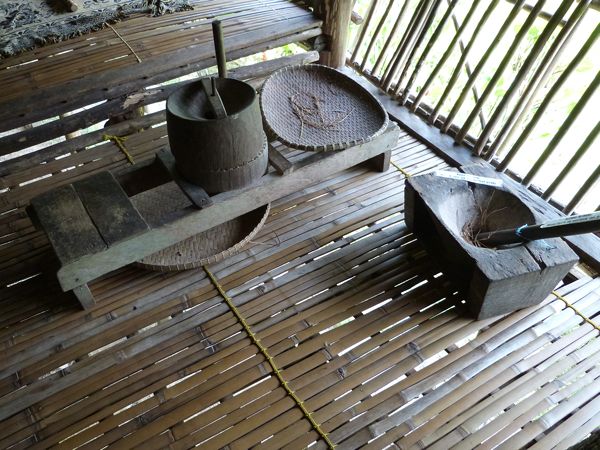
The longhouse is built with a number
of private rooms fronted by a long open gallery, or veranda, which serves as a
communal area. In the picture below, you
see the individual rooms on the right and the large, long gallery on the left.
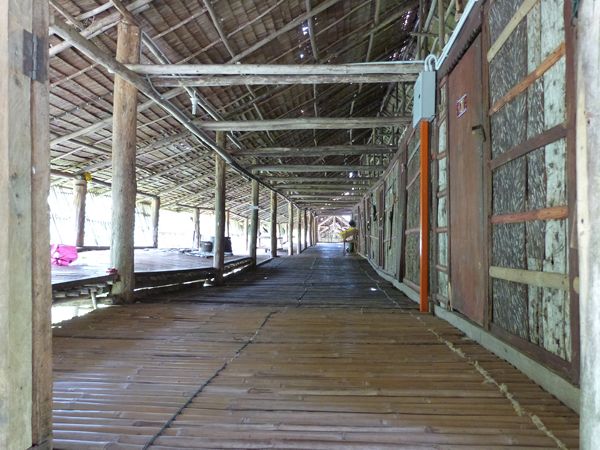
Often longhouses were used to house
extended families. As more kids grew up,
and began their own families, another room would be added to the end of the
longhouse. Some of these longhouses got really, really long!
But time marches on and progress
takes a toll on tradition. Today, things
are changing and, like Western families, children don’t always continue to live
close by their parents anymore. Young
people often seek out opportunities to advance themselves beyond the previous
generation. Children from the
countryside are heading to the big cities seeking a better life and all the modern
conveniences which have been made possible now that Borneo is beginning to reap
the benefits of natural resources such as petroleum, LPG, timber, palm oil etc.
The
Rungus way of life is threatened with extinction – all in the name of
progress. We were grateful to have this
opportunity to visit the Maranjak Longhouse and to learn more about their
fascinating culture.
But, even as times change, the appeal
of the “longhouse lifestyle” endures. We
visited another community in Sarawak which has adopted the longhouse
architectural model with a few modern-day conveniences.
Peregrina was cruising up the Sanjong
Rajang river system after leaving Kuching. The Sanjong Rajang is basically a
jungle river and we were enjoying a little side-trip as we made our way up to
Miri. Here is a picture of Peregrina anchored off a village on the river. We saw a few houses, threw down the anchor and
took the dingy to the river bank.
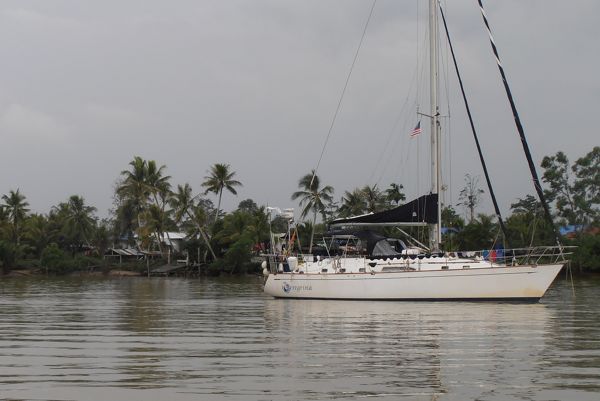
Once on shore, we walked along the
boardwalk of the village. The houses and the boardwalk were raised since the
river can overflow due to heavy rains. You will see on the right hand side of
the picture below what we initially thought were a long row of connected houses
since each one had its own door and is painted a different color.
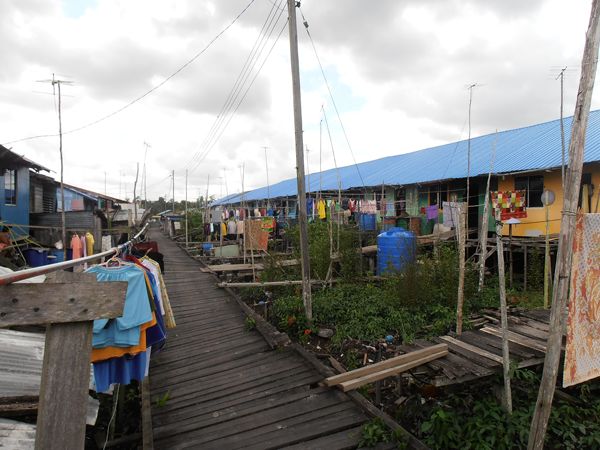
Turns out, once we went through one
of the doors, we were surprised to find ourselves inside a modern-day longhouse
which consisted of 58 individual family units of 1-3 rooms each with a long
common gallery in front – just like the Rungus style longhouse but with 21st
century updates.
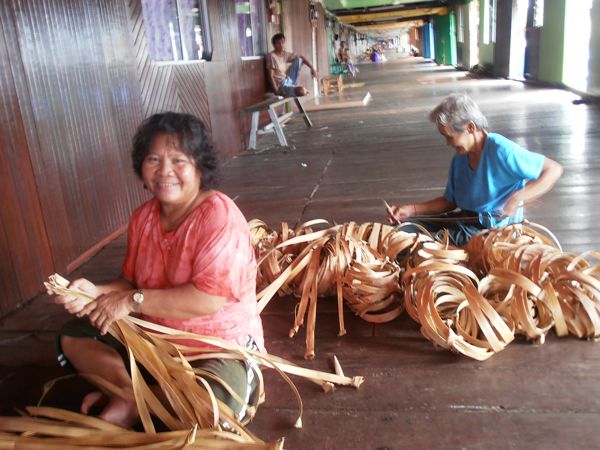
This was simple but modern
construction with wood floors, sheet metal roofs, electricity, satellite dishes
and internet access. However, the common area was still where everyone worked
and socialized. The sense of community
was palpable and as we walked along the length of the longhouse, we met many
people still engaged in very traditional activities.
Here is Margie learning house to
weave mats.
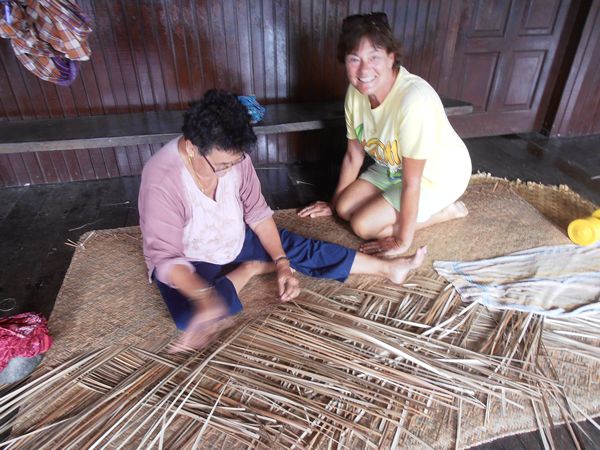
This woman is making a beautiful
beaded basket cover.
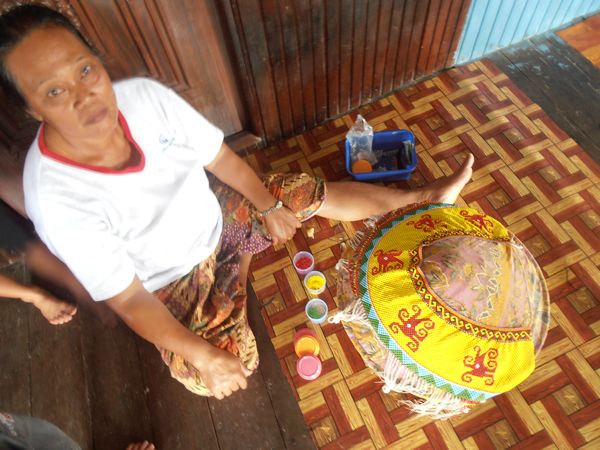
In this photo, an elder is preparing
local fruits for the evening meal.
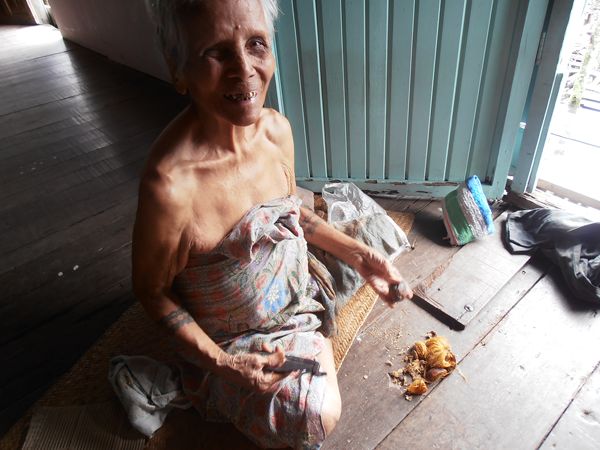
But, some things never change and
kids from all cultures and every generation are eager to engage in
communication. In the photo below, you
will see our new young friends. We brought an ample supply of balloons,
crayons, pens and notebooks. A few minutes
prior to this photo, Peter had been soundly defeated in a game of Tic Tac Toe
which we have found is a universal “ice-breaker!”
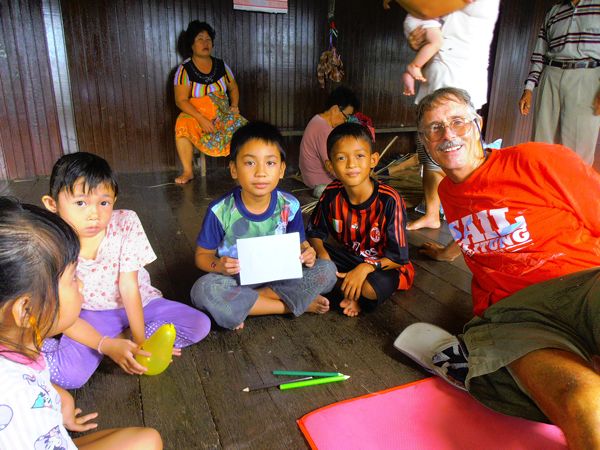
The kids were proud to show off their
longhouse home to us and wanted us to meet their family members and learn about
their way of life.
It is nice to know that when the road
ends in the river jungles of Borneo that the people still long for longhouses
and honor the traditions of their ancestors.